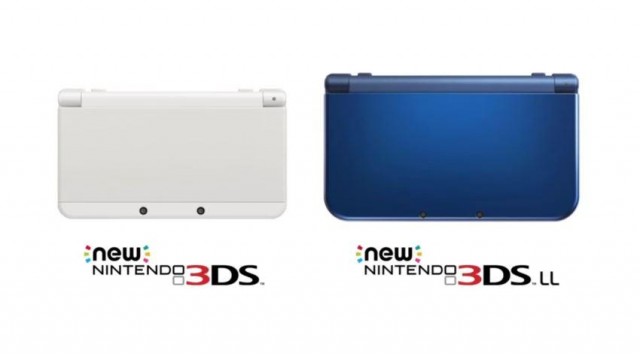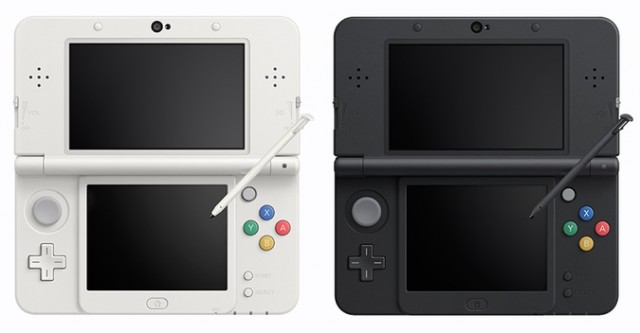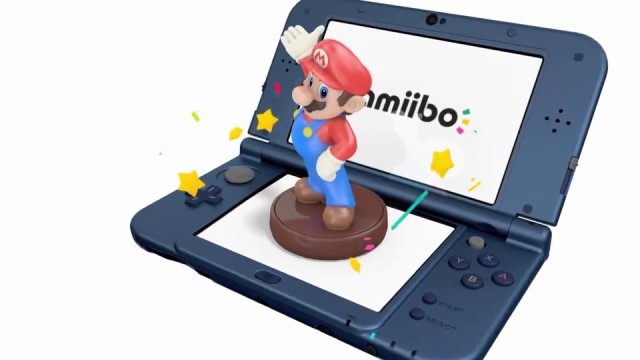
With the news that Nintendo would soon be rolling out “New” models of its immensely popular 3DS and 3DS XL handhelds, many fans simultaneously cheered with joy and arched a curious eyebrow. Though at a glance they appear a marked improvement over the originals, the question remains: why now? With roughly three and a half years passed since the launch of the original 3DS, the timing does seem a bit odd at first sight. Nintendo is no stranger to hardware remodels and upgrades, having released numerous new models of a given system over its lifecycle many times in the past. 3DS itself has already seen the introduction of the XL and 2DS variants. What makes this instance special, however, is that Nintendo isn’t just slimming down 3DS, the company is rebuilding it from the ground up.
This total overhaul is also not a foreign concept, as Nintendo did much the same thing with Nintendo DS when the company introduced DSi. Boasting better processing power, cameras, web surfing, and game downloads via DSiWare, DSi was radically different from the original and Lite versions of the system. What is most important about the parallels between the introduction of DSi and what is being tentatively called New 3DS is that both are systems that play games their predecessors can’t. It’s a scary prospect for those who have already invested in the baseline 3DS hardware and don’t want to have their purchases nullified before a true, next-gen leap to whatever the next handheld is that will come from Nintendo. In short, it’s leaving some concerned that they’re getting shortchanged.
Going back to DSi, though, it’s reassuring to note that though it did indeed play games that couldn’t be supported on the previous hardware models, there were only three such titles in total that were ever made. Of course, the reasons for that are multiple and hard to pin down, but it seems reasonable to assume that it was due in no small part to the fact that DS already had a mammoth install base. With millions of units sold already, many developers, Nintendo included, were reluctant to expend resources to produce a title that excluded so many potential customers. There’s no guarantee that history will repeat itself with New 3DS, but the precedent has certainly been set, and it should offer some solace to those feeling a little glum about the impending console’s arrival.

On the other hand, it’s a bit of a different ballgame with New 3DS. For starters, the alterations to the console are a bit more aggressive (in terms of the physical) than what Nintendo did with DSi. An entire new set of shoulder buttons have been added, along with the C-Stick nub above the face buttons on the right side of the unit. Coupled with the increased processor power, and New 3DS seems to have been more specifically designed to play games unique to it than DSi ever was. That could spell trouble for current-3DS owners, along with Nintendo’s other announcement of a New 3DS-exclusive port of Xenoblade Chronicles, further asserting the company’s commitment to this new direction. Still, one game is exactly that: a single title. Until Nintendo announces an entire wave of New 3DS-only games, it seems safe to breathe easy, for the time being.
Don’t forget, too, that Nintendo hasn’t said anything about abandoning the original 3DS platform. Amiibo integration is solid proof of this, as it will be possible on both New and original 3DS systems to utilize the figurines, with the latter facilitating this via an adaptor for a separate add-on reader. Being realistic, Nintendo knows how many 3DS consoles are currently in the wild, and that it would be foolish to sever ties with that bustling pack of consumers in one fell swoop. With the release of 2DS earlier in the year, Nintendo demonstrated an acute awareness of the financial needs of its economically diverse fan base, so there’s every reason to believe that the company is going to be playing a balancing act to keep all of its customers pleased. Not that everyone is going to be happy, of course; no matter how it’s spun, New 3DS ultimately means plunking down another hefty chunk of change to keep up with Nintendo.
I’m a strong proponent of keeping the video game industry inclusive to gamers of all economic situations. Growing up, I certainly had my fair share of video games to play, but I also knew plenty of folks who’s families simply couldn’t afford to have a game system, even a handheld, in the house. Console are expensive, games are expensive, and any time that Nintendo introduces a new hardware design, especially one that will slowly but surely supplant the original over time, it stings for more than a few fans. That being said, and as I’ve illustrated so far, this is not a nightmare scenario. Nintendo, if it wants to see New 3DS succeed, is going to have to take a slow and steady approach with the console, but as the success of DSi has already proven, Nintendo fans are willing to embrace these sorts of transitions if they’re done fairly. Of course, with 3DS already doing quite well for itself, some are also probably wondering why is Nintendo even making such a drastic change, to begin with.

Part of the motivation might very well have been spurred by recent legal action. In separate lawsuits levied by Philips and Seijiro Tomita, Nintendo has been found guilty of patent infringement for its use of motion control and glasses-free 3D technology, respectively. Two very big component of 3DS’s architecture, and though Nintendo is continuing to battle the rulings in court, it’s very possible that that company is trying to circumvent any further legal troubles down the road by starting from scratch with the 3DS line. This is purely conjecture, of course, but given the very real possibility that Nintendo might not win its appeals, there would be an unavoidable need to revamp 3DS with new technology in order to keep the line alive. Just look at the New 3DS announcement, wherein Nintendo makes a point of highlighting the handheld’s improved glasses-free 3D screen; if it’s a coincidence, it’s a fairly big one.
Again, this isn’t substantiated, just some amateur sleuthing. It’s arguable that a simple swapping out of the screen-tech and motion controls (which weren’t addressed in the announcement of New 3DS, in further fairness) would have been enough for Nintendo to keep selling the console as-is. So what else could have propelled Nintendo, then? Though I hate to pull the Apple card, between it and companies like Samsung, consumers have become accustomed to phone and tablet manufacturers making incremental changes to their hardware on a regular basis. Perhaps Nintendo is switching up its approach to a traditional console lifecycle, opting to make adjustments at a more methodical pace, instead. This would be fascinating, as it helps maintain brand continuity for consumers. A big complaint about 3DS when it launched was that the name didn’t distinguish itself enough from DS and DSi, leading some consumers to wonder if it was a new system or not. “New 3DS” is pretty straightforward, branding-wise, so maybe it’s a start for things to come.
Whether or not Nintendo is planning to go the iPad route with semi-regular hardware updates is up in the air, but even if New 3DS is just following in the footsteps of DSi, it’s a smart move for Nintendo to make. Though it has yet to hit consumer hands, the alterations sound and look good on paper. The design addresses several complaints that have plagued all iterations of the console to date, and if the build is a true improvement, it would go a long way toward justifying its existence. Making New 3DS more Amiibo-friendly, assuming the collection of figurines is able to get some solid traction in the market, will also be beneficial to Nintendo, in the long run. Overall, Nintendo seems to be on to something good with New 3DS, and as long as the roll out is paced properly, and pricing is fair, the 3DS line should continue to be king of the handhelds.




 ShareThis
ShareThis







Great insight. Nice to see a non-freakout approach. Been setting a lot of negativity about the new models, but if it increases the brand awareness and refreshes the line in a positive manner, why not.
I’ve seen it compared to the gameboy color and looking at it that way makes sense to me. Gameboy color made major upgrades but didn’t abandon the original system. Think this will do the same.